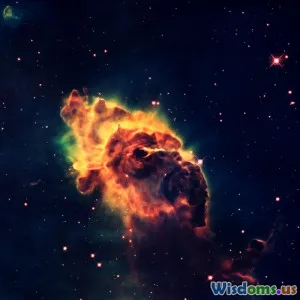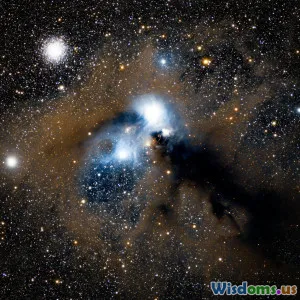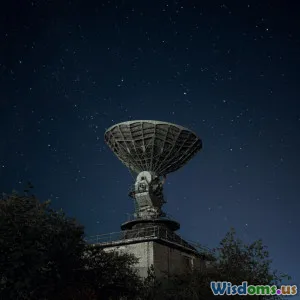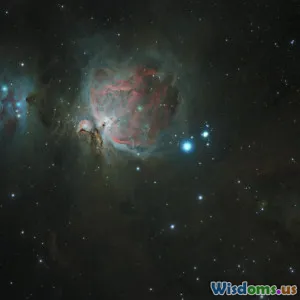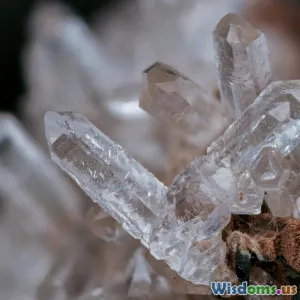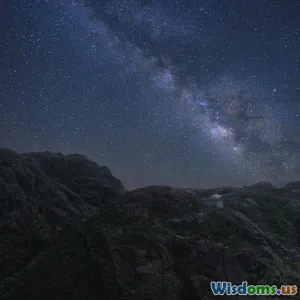
The Birth and Death of Galaxies
6 min read Explore how galaxies are born and die, uncovering the cosmic processes that shape our universe. (0 Reviews)
The Birth and Death of Galaxies
Galaxies are not just mere collections of stars; they are vast, complex systems that play a crucial role in the evolution of the universe. Understanding how galaxies are born and die provides insight into the larger workings of cosmic evolution. In this article, we will delve into the life cycle of galaxies, exploring the processes that govern their formation, evolution, and ultimate demise.
The Birth of Galaxies
Cosmic Nurseries
The birth of a galaxy begins in what astronomers call a cosmic nursery. These are dense regions of gas and dust within the universe, often found in areas of higher gravity, which can trigger the collapse of materials under their own weight. The most common scenario for galaxy formation is the gravitational collapse of primordial gas, particularly hydrogen and helium, which make up the majority of the universe's matter.
The Role of Dark Matter
Dark matter plays an essential role in galaxy formation. Although it cannot be seen directly, its presence is inferred from its gravitational effects on visible matter. Dark matter halos provide the gravitational framework necessary for galaxies to form. As gas accumulates in these halos, it cools and condenses, eventually leading to the formation of stars and, ultimately, galaxies.
Types of Galaxies
Galaxies can be categorized into several types based on their structure and formation history:
- Spiral Galaxies: These galaxies, like our Milky Way, feature prominent spiral arms and are characterized by ongoing star formation.
- Elliptical Galaxies: These are more rounded and have older star populations, indicating that star formation has largely ceased.
- Irregular Galaxies: These lack a distinct shape and often arise from gravitational interactions between galaxies.
The Life of Galaxies
Star Formation and Evolution
After their formation, galaxies enter a phase of active star formation. Regions of dense gas collapse to form new stars, leading to the creation of star clusters. Over time, stars evolve and undergo various life cycles, from burning hydrogen in their cores to eventually exploding as supernovae.
Galactic Mergers
Galaxies also evolve through interactions with one another. Galactic mergers can lead to the formation of new galaxies, often triggering waves of new star formation. These events contribute to the dynamic and ever-changing nature of the cosmos. The Milky Way and the Andromeda Galaxy are on a collision course, set to merge in about 4.5 billion years.
The Death of Galaxies
Ceasing Star Formation
As galaxies age, the gas necessary for new star formation can become depleted. In spiral galaxies, this process can be gradual, leading to a transition into an elliptical galaxy. The gas may be expelled from the galaxy due to galactic winds or consumed in star formation, thus reducing the number of new stars formed.
The Fate of Galaxies
Ultimately, galaxies face various fates:
- Becoming Quiescent: As star formation slows, galaxies may become quiescent, evolving into elliptical shapes filled with older stars.
- Merging with Other Galaxies: As mentioned earlier, galaxies can merge, leading to more massive structures.
- Dissipation: In some cases, particularly smaller galaxies, they may lose their gas and star formation entirely, becoming faint remnants of their former selves.
The Dark End
The final stages of a galaxy's life can involve complex interactions with dark energy, which drives the accelerating expansion of the universe. Larger structures may drift apart, becoming increasingly isolated.
Conclusion
The birth and death of galaxies are fundamental processes that shape the universe we observe today. From the majestic spirals that light up our night sky to the ghostly remnants of once-vibrant galaxies, understanding these cosmic phenomena enhances our grasp of the universe's history and future. As scientists continue to study these processes, we inch closer to unraveling the mysteries of our cosmic home.
In conclusion, galaxies are not static entities but dynamic systems that evolve over billions of years, offering a glimpse into the intricate workings of the universe. Whether through the birth of new stars or the death of old ones, galaxies remind us of the beautiful complexity of cosmic life.
Rate the Post
User Reviews
Popular Posts











